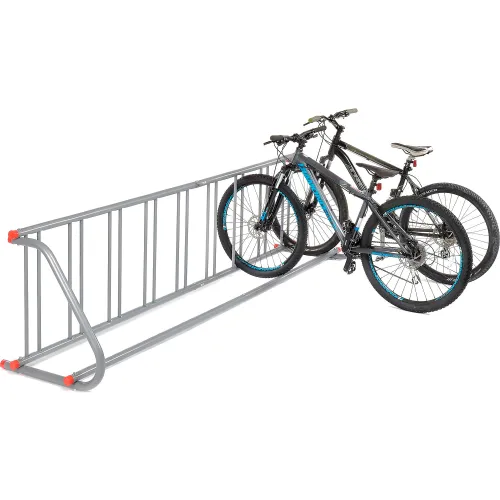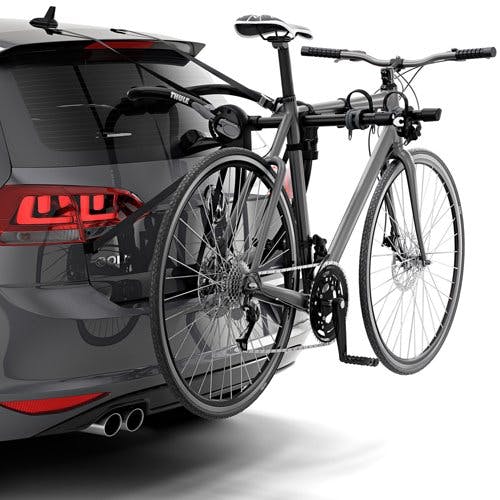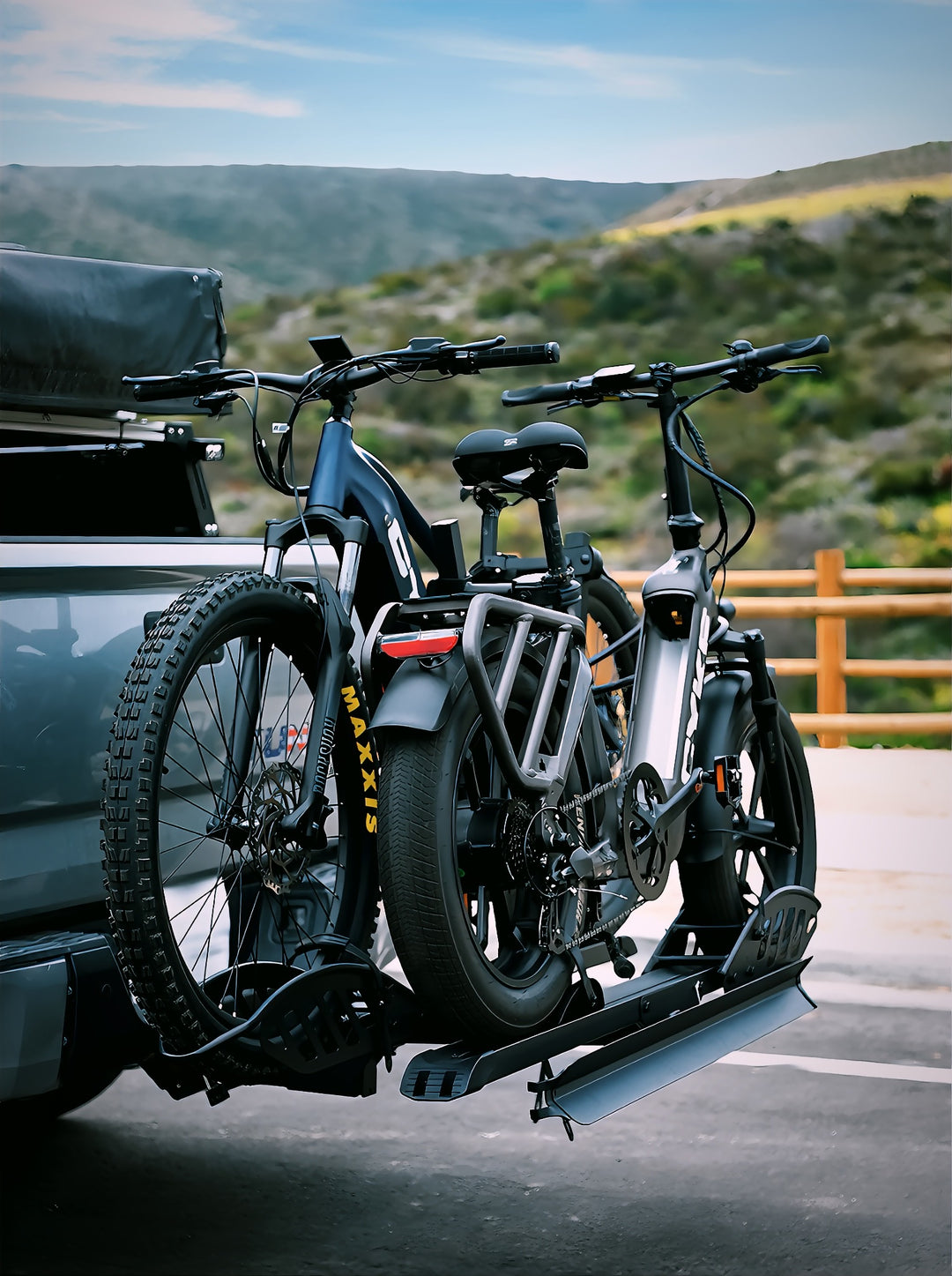Inspection Guide Before Driving With a Hitch Bike Rack
Wiki Article
Explore the Various Kinds of Bike Rack and Their Practical Applications for Cycling Enthusiasts
The range of bike Racks offered today caters to the varied needs of biking lovers. From freestanding to wall-mounted choices, each style supplies special advantages for storage and transportation. Mobile Racks also offer adaptability for those on the move. Picking the excellent kind calls for mindful factor to consider of details demands. Understanding these variables can make a significant distinction in both ease and safety for bicyclists. What are the crucial factors to consider when choosing a bike rack?Comprehending Bike Shelf Enters
Different kinds of bike Racks accommodate the diverse needs of bicyclists. Among one of the most common are freestanding racks, often located in urban locations, which enable numerous bikes to be secured in a small room. Wall-mounted Racks serve those with limited floor space, providing an effective option for home storage space. Furthermore, mobile bike shelfs, made for simplicity of transport, appeal to bikers who frequently travel.
Hitch-Mounted Bike Racks
Hitch-mounted bike Racks offer a practical service for transporting bikes, however understanding their installation process is vital for reliable usage. Customers must likewise consider the weight capacity of these Racks to assure security and stability while traveling. Additionally, compatibility with different lorry kinds plays a substantial duty in establishing the best shelf for individual demands.Installation Process Summary
When selecting a hitch-mounted bike shelf, recognizing the installation procedure is vital for assuring safety and security and ease. The user must confirm compatibility in between the rack and the car's drawback receiver. Many Racks are developed for either 1.25-inch or 2-inch receivers. After selecting the suitable shelf, the installation starts with safeguarding the shelf right into the hitch receiver and tightening up the drawback pin or screw to stop movement. Appropriate placement is crucial to ascertain the rack does not obstruct tail lights or permit plates. Once set up, it is advisable to look for stability by applying mild stress to the shelf. Complying with the maker's instructions will certainly guarantee an effective setup, promoting a risk-free biking experience when driving.Weight Ability Considerations

Compatibility With Vehicle Types
Choosing the best bike shelf entails validating compatibility with various car kinds. Hitch-mounted bike Racks are created to connect to the back hitch receiver of a vehicle, making them ideal for a wide variety of cars, SUVs, and vehicles. It is crucial to check the hitch course and weight capability to verify an appropriate fit. The majority of hitch-mounted Racks work with 1.25-inch and 2-inch receivers, suiting automobiles equipped with proper pulling capabilities. Furthermore, customers must consider their vehicle's height and design, as some Racks might obstruct back accessibility or require added clearance. Eventually, recognizing lorry specs verifies that cycling fanatics can safely carry their bikes without jeopardizing safety or functionality.Trunk-Mounted Bike Racks
Trunk-mounted bike Racks use a useful service for cyclists seeking a reliable way to transport their bikes. Comprehending the installment process is important for perfect use, as inappropriate configuration can lead to safety concerns. In addition, considering the weight ability of these Racks assurances that they can firmly hold the bikes without risk of damages or failure throughout transit.Installation Process Summary
Many biking lovers appreciate the ease of trunk-mounted bike Racks for their convenience of usage and flexibility. The installation procedure generally begins with familiarizing and unboxing the shelf oneself with its parts. Many Racks include adjustable straps and hooks made to secure them to the lorry's trunk or hatch. Customers should confirm the rack is positioned correctly, straightening it with the car's shapes for security. Complying with the manufacturer's directions, the bands are then tightened securely, guaranteeing a tight fit. It's vital to check that the rack does not obstruct the automobile's lights or license plate. Verifying that all connections are safe and secure before filling bikes is important for risk-free transportation. Appropriate installation boosts both safety and security and efficiency during cycling journeys.Weight Ability Considerations
When taking into consideration a bike rack for transferring bicycles, weight capability is an important variable that can not be overlooked. Trunk-mounted bike Racks generally carry weight limits that vary depending upon the version and style. It is vital for individuals to examine these specifications to ensure they do not go beyond the recommended weight, as doing so can compromise both safety and lorry integrity. Most trunk-mounted Racks can support one or 2 bikes, with a combined weight ability varying from 70 to 120 extra pounds. Bicyclists need to additionally think about the weight of their Hitch Bike Rack bicycles, specifically if they possess larger versions like electrical bikes. Appropriately matching the rack's weight ability with the bikes' weights assures a secure and risk-free transport experience.Roof-Mounted Bike Racks
Roof-mounted bike Racks supply a structured solution for moving bikes, providing cyclists with the advantage of taking full advantage of cargo room. These Racks are made to hold bikes safely atop the automobile, allowing for easy access to the rear of the cars and truck and avoiding blockages to the certificate plate or tail lights. They are perfect for people who often take a trip with their bikes, as they can fit different bike styles and dimensions.Installment usually involves connecting the rack to the lorry's bars, making sure a risk-free and steady fit. Roof-mounted Racks are typically aerodynamic and light-weight, which can cause improved fuel effectiveness contrasted to various other kinds of racks. Nevertheless, individuals must take into consideration the height of their automobile when loading and unloading bikes, in addition to prospective obstacles when entering garages or low-clearance locations. Generally, roof-mounted bike Racks supply a reliable and versatile choice for avid bicyclists on the move
Wall-Mounted Bike Racks
Wall-mounted bike Racks offer a reliable solution for bikers looking for to optimize restricted space while securely storing their bikes. These Racks are optimal for urban dwellers or those with small garages, as they boost bikes off the ground and make use of vertical space. Made from tough materials, wall-mounted options can accommodate numerous bike kinds, including hybrid, roadway, and mountain bikes.Installation is uncomplicated, making it possible for individuals to place them in garages, cellars, and even outdoor areas. Numerous designs allow for one or several bikes, making them functional for individual or family members usage. Additionally, some wall-mounted Racks featured integrated locks or security attributes to deter burglary, enhancing assurance for cyclists.
Mobile Bike Racks
Portable bike Racks provide cyclists a practical and adaptable remedy for transferring their bicycles. These Racks are made for easy installation and removal, making them ideal for those that require to regularly switch over in between lorries or areas. Portable and normally lightweight, portable bike Racks can be easily saved in a trunk or garage, minimizing the problem of permanent installments.There are various kinds of mobile bike shelfs, including hitch-mounted, trunk-mounted, and roof-mounted choices, each accommodating different lorry types and bicyclist preferences. Hitch-mounted Racks offer stability and availability, while trunk-mounted Racks are frequently more flexible and budget-friendly. Roof-mounted Racks are excellent for making the most of freight space however may need some training.
Selecting the Right Bike Shelf for Your Needs
How can one figure out the very best bike rack to fit their details cycling requirements? Determining the best bike shelf includes examining several aspects. One should think about the kind of car made use of for transportation, as Racks are designed for various mounting systems, such as drawback, trunk, or roof. Next, the number of bikes to be lugged is essential; some Racks suit only one, while others can hold numerous bikes successfully. In addition, identifying the weight and framework style of the bikes is substantial, as specific Racks are much better suited for much heavier or distinctly designed bicycles. Designated use needs to be taken right into account; regular tourists might favor a much more portable alternative, while periodic customers could prioritize simpleness and convenience of installment. By meticulously weighing these considerations, individuals can select a bike shelf that satisfies their needs and enhances their biking experience.
Regularly Asked Questions
Can Bike Racks Accommodate Different Bike Sizes and Styles?
Bike Racks vary in layout, enabling holiday accommodation for different bike sizes and designs. Some Racks include adjustable parts, while others are especially tailored for specific bikes, ensuring safe and secure storage and simple accessibility no matter the bike's specs.Just how Do I Correctly Secure My Bike on a Rack?
To correctly secure a bike on a shelf, one ought to assure the frame and wheels are snugly secured making use of locks or straps, looking for security and stopping movement throughout transportation to stay clear of damage.Are Bike Racks Easy to Eliminate and install?
Bike Racks differ in installation complexity, however many are created for user-friendliness. Removable designs commonly use straightforward arrangement and elimination, while long-term setups might require tools and even more time, relying on the specific style.
What Materials Are Bike Racks Commonly Made From?
Bike Racks are generally made from materials such as light weight aluminum, plastic, and steel. Hitch Bike Rack. Steel gives toughness and toughness, while light weight aluminum uses lightweight portability. Plastic options are commonly developed for convenience of use and costDo Bike Racks Affect Gas Efficiency When Driving?
When driving is considerable, the concern of whether bike Racks influence fuel performance. Research studies indicate that bike Racks can boost aerodynamic drag, potentially causing reduced gas efficiency, specifically at greater rates or with additional weight.After picking the proper shelf, the installation begins with safeguarding the rack right into the drawback receiver and tightening up the drawback pin or bolt to prevent movement. Roof-mounted Racks are often wind resistant and lightweight, which can lead to boosted fuel effectiveness contrasted to various other types of racks. Hitch-mounted Racks give stability and access, while trunk-mounted Racks are often much more flexible and economical. Next, the number of bikes to be brought is crucial; some Racks fit just one, while others can hold numerous bikes efficiently. Bike Racks differ in style, allowing accommodation for different bike sizes and styles.
Report this wiki page